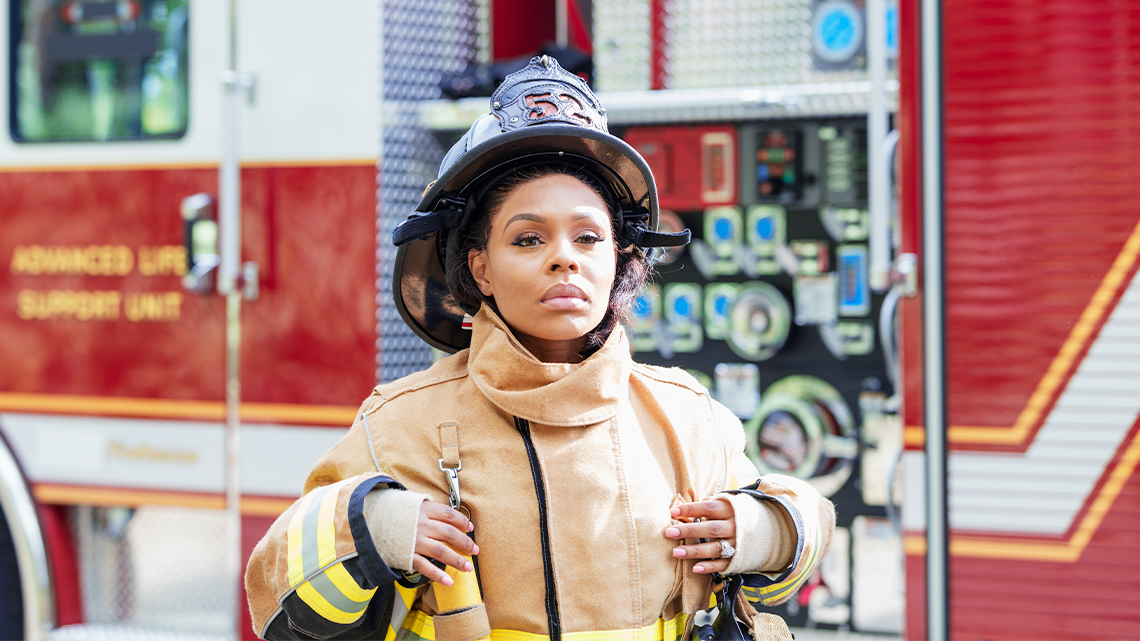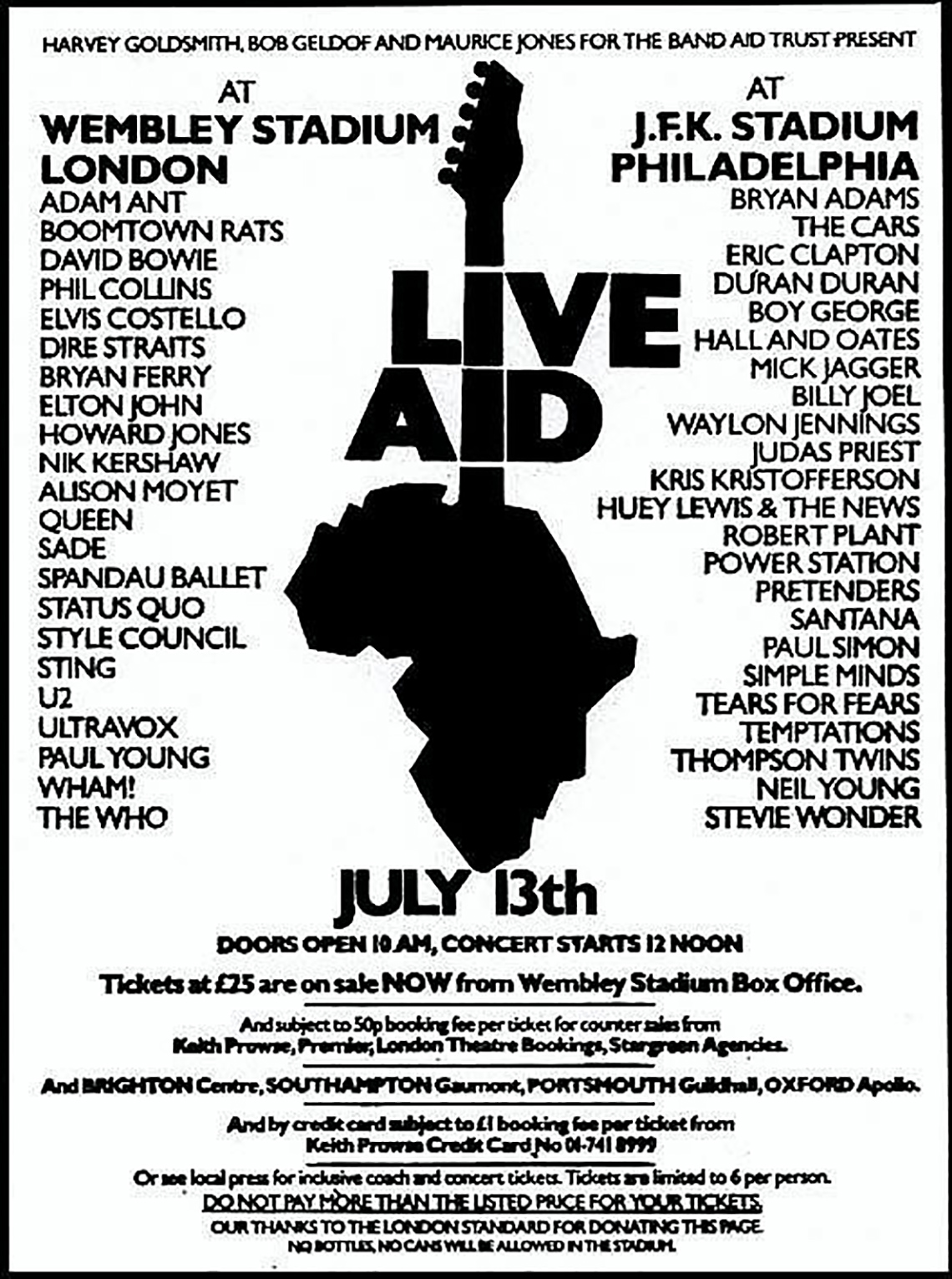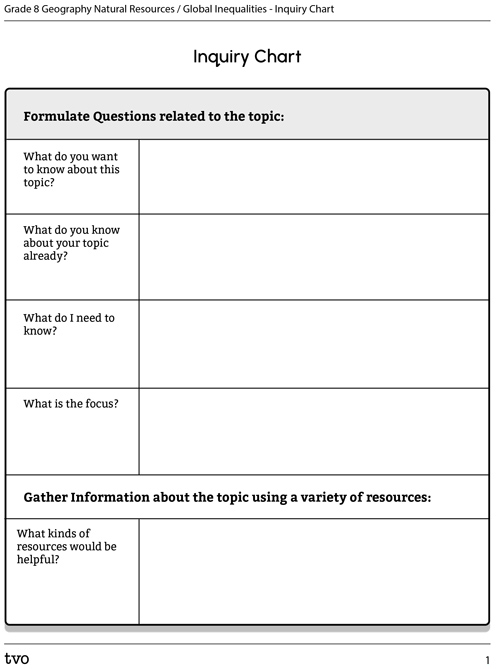Minds On
Task 1: Wants and needs

Create a list of your needs (what you need to survive) versus your wants (what you would like to have).
Record your ideas in print, digitally, orally, or in a method of your choice.
Brainstorm
Brainstorm
Based on your list, what do you believe you need in order to live a long time? What about to live a happy life? How do you measure this?
Action
Task 1: Measuring quality of life
Before we begin, press ‘Quality of Life’ to reveal the definition of quality of life.
Indicators
There are several significant indicators that are commonly used to measure the quality of life on a global scale. Explore the following section to learn about these indicators.
Income and jobs allow people to cover their basic needs and provides opportunities to fulfill personal wants and accumulate wealth. This includes household income, financial wealth, job security, and earnings.

Good housing conditions allow people to meet their basic needs of safety, feeling of protection, privacy, and personal space, as well as allowing them to start a family. This includes traffic noise, area of living, and housing spending.

Health is one of the most valuable aspects of a person’s life and enables active participation in social life and work. This includes your physical, mental, and emotional health. It is often measured by fertility rates, life expectancy, birth and death rates, and access to medical care.

Education opens opportunities for development and helps people better cope with social and economic changes. This includes literacy rates and access to education.

People want pleasant and natural surroundings near their residence and for their leisure time. This includes land use and pollutants.

A good work-life balance influences well-being and productivity in the workplace.

People want to live in an area where they feel safe and are away from risks that threaten material conditions and safety of individuals and households. This is primarily influenced by crime and natural hazards. Examples include losing one’s job, health problems, crime, violence, etc.

We can also analyse the quality of someone’s social support network to indicate quality of life.

Research activity
The following countries are listed as having a very high quality of life. Conduct some of your own research to determine why these countries would be listed as having a high quality of life. Record your findings in a method of your choice.
- The Netherlands
- Canada
- Australia
- Iceland
- Sweden
- United States
- Switzerland
- Norway
Use the following checklist to guide your research. Begin your research using government websites and databases.
Quality of Life Checklist
For the eight countries, research the following quality of life indicators. Check off each indicator as you complete it.
Brainstorm
Brainstorm
Based on your research, were there any similarities you noticed between these 8 countries that contribute to their overall quality of life?
Compare & contrast
War, education, the physical environment, air and water quality, and sustainability are all factors that affect quality of life. These factors are all connected and interact with each other. For example, if there is a lack of healthcare and a lack of clean drinking water, waterborne diseases might spread more quickly.
Geographers use specific indicators to measure conditions in a country. An indicator is something that can be observed or measured. Examine a few of the following key indicators:
Brainstorm
Reflect
Why do you believe these are all indicators of quality of life?
Press the ‘Hint’ button for some help with this question.
Now that you understand some of the key indicators that measure quality of life, explore these indicators in relation to the following countries: Canada, Australia, and Mali.
|
Country |
Canada |
Australia |
Mali |
|---|---|---|---|
|
Infant mortality rate |
4.2 deaths per 1,000 births |
2.9 deaths per 1,000 births |
60.2 deaths per 1,000 births |
|
Literacy rate |
99% |
99% |
31% |
|
Per capita GDP |
$43,278 per person |
$55,060 per person |
$879 per person |
|
Poverty rate |
10.1% |
13.6% |
42.1% |
Reflect on the chart and record your answers to the following questions in a method of your choice. If you’d like, you can press the ‘Hint’ buttons for helpful tips about each question.
- What do you notice about the infant mortality rate between these three countries? What
do you think leads to the difference between these rates?
Hint: Think about healthcare that may be accessible in each country.
- How do you think per capital GDP relates to other quality of life indicators?
Hint: Think about how income per person is connected to literacy, infant mortality, and poverty.
- What are three conclusions you could draw from this information?
Hint: Consider what you notice about these three countries – how are they similar and different?
Task 2: Inquiry
Vocabulary
Quality of life issues often come with social, political, economic, and environmental impacts. In this section you will be exploring quality of life issues and determining the social, political, economic, and environmental impact they have.
Before we begin, let’s check our understanding of some key terms. In the following matching activity, match the appropriate definition to the associated word.
Pakistan floods of 2010
We will now explore an actual quality of life issue: the Pakistan floods of 2010. We will begin by reading a short article about this event, and then determining the social, political, economic, and environmental impacts.
Read the following article about the Pakistan Floods of 2010.

In 2010, the Indus River in Pakistan flooded. This was considered one of the worst humanitarian disasters Pakistan had seen. The floods affected approximately 20 million people and destroyed homes, crops, and infrastructure. The floods left millions vulnerable to poverty and disease. Thousands of people were killed, and millions were left homeless. Rescue and humanitarian aid were provided by foreign countries (such as the United States and Saudi Arabia). The damages guaranteed a long-lasting impact in Pakistan, estimating the cost of damages at 43 billion dollars.
Source: Britannica, T. Editors of Encyclopedia. (2019, June 24). Pakistan Floods of 2010.” Encyclopedia Britannica. https://www.britannica.com/event/Pakistan-Floods-of-2010.
Based on the article, what were the social, political, economic, and environmental impacts of the Pakistan floods?
|
Social |
|
|---|---|
|
Political |
|
|
Economic |
|
|
Environmental |
You can record your answers in the following fillable and printable Inquiry Graphic Organizer or use another method of your choice.
Press the ‘Activity’ button to access Inquiry Graphic Organizer.
When you are ready, press the ‘Answers’ button to reveal some possible answers to this activity.
|
Social |
People were killed or left homeless. |
|---|---|
|
Political |
Pakistan relied on aid from other countries. |
|
Economic |
Caused 43 billion dollars in damages. |
|
Environmental |
While the article doesn’t explicitly say this, you can infer that large areas of land were destroyed, along with the houses. The floods directly impacted those who relied on the agricultural industry. |
Test Your Skills!
Inquiry activity
Choose one of the following topics to conduct research on. Begin by describing the quality of life issue and the main causes of the issue. You can begin your research on government and non-government organization websites. Share your findings in a method of your choice.
Choose one of the following topics:
- Educating girls (consider this issue in less developed countries)
- AIDS pandemic in sub-Saharan Africa
- Fair trade (coffee, chocolate, bananas)
- Foreign debt and forgiving foreign debt (Hint: explore Greece)
- The war in Sudan and its refugee crisis
Use the following fillable and printable Inquiry Chart to guide your research. You may also jot notes in your notebook or use another method of your choice.
Task 3: Media and celebrities
Have you ever observed a commercial, heard a song, or read about a quality of life issue in the media? If yes, do you recall any celebrities that might have been involved in raising awareness for the cause?
Organizations frequently use celebrities to endorse global issues, such as issues related to quality of life. Celebrities use their status to help raise awareness of issues and potentially bring extra fundraising (money) towards the quality of life issue.
Band Aid

Musician Bob Geldof wanted to support and raise awareness about famine (an extreme scarcity or shortness of food) in Ethiopia. Bob Geldof went on to create “Band Aid” and produced a hit song for famine relief. He then put together an event called Live Aid 1985. Live Aid was a multi-venue rock concert held in July of 1985. Over 72,000 people attended the concert in London and 90,000 attended in the United States. At the time, this was one of the largest-scale television broadcasts of all time, with over 2 billion viewers across 150 countries watching. The goal of the concert was to raise emergency relief money, but also to spread awareness about extreme poverty so it would be added to the political agenda. The concert raised over 100 million dollars.
However, how could Band Aid expect to solve internal and external problems for an entire country which persists to this day? While many saw it as charity, the organizer Bob Geldof disagreed. As Geldof claimed, “Calling it charity drove me nuts. For me, this was finely tuned politics.” He was looking to raise awareness about the issues in hopes that the government would step in and help.
One of the most popular songs, “Do They Know It's Christmas?,” was heavily scrutinized as a song that went too far. The song makes poor references to the people living in Ethiopia. A later interview with an organizer of the event revealed that not all of the collected money went where it was intended to go. Some was spent on overhead and advertisements. However, Live Aid is still collecting charitable donations through a variety of other events. Proceeds are funding a variety of development projects and emergency aid.
Source: History.com Editors. (2009, November 24). Live Aid concert raises $127 million for famine relief in Africa. History.com. https://www.history.com/this-day-in-history/live-aid-concert.
“Wavin’ Flag”
In January of 2010, Haiti was struck by a magnitude 7.0 earthquake. This was one more disaster in a country that was already suffering from decades of political, economic, and social inequalities. Approximately 3 million people were affected, categorizing this earthquake as one of the most devastating natural disasters ever experienced in Haiti.
Drake, Justin Bieber, Kardinal Offishall, Nelly Furtado, and Nikki Yanofsky were among the dozens of artists who came together to offer support. They organized and recorded “Wavin’ Flag,” a remix of K’naan’s original track. The song and music video raised over 1 million dollars with all proceeds going to Free the Children, War Child Canada, and World Vision to support their individual on-the-ground efforts in Haiti.
The Dakota Pipeline Movement
The Dakota Pipeline has been designed to transport barrels of crude oil (a natural resource occurring from fossil fuel) from North Dakota to Illinois. An Indigenous community, the Standing Rock Sioux, has been opposing the pipeline because it would travel underneath the Missouri River, which is their primary water source. Concerns of a leak or small spill could ruin the water supply. The pipeline would also contribute to human-made climate change by releasing more fossil fuels.

For months people gathered to protest the pipeline development and protect the water. Among the protestors was actress Shailene Woodley, best known for roles in movies and TV shows such as Divergent, The Fault in Our Stars, The Descendants, and Big Little Lies. Woodley was arrested when protesting the Dakota Pipeline and her arrest was recorded and posted to social media. This drew a lot of attention to the pipeline.
Woodley went on to speak of her experience and raise awareness of the issues of the pipeline. Specifically, Woodley spoke about the impact on Indigenous communities. Woodley has released a call to action for the public to speak up and advocate for the protection of Indigenous communities. She also called for the end of the Dakota Pipeline and the need for investment in renewable energy sources instead.
Source: Woodley, S. (2016, October 20). Shailene Woodley: I Was Arrested Fighting Dakota Pipeline. Time. https://time.com/4538557/shailene-woodley-arrest-pipeline/.
Test Your Skills
Pros and cons
You may wish to explore other celebrity endorsements and attempts at raising awareness about quality of life issues. The following is a list of celebrity endorsements and causes:
- “We Are the World” produced by Michael Jackson and Lionel Ritchie
- “Tears Are Not Enough” produced by Northern Lights
- United Nations appoints celebrities as goodwill ambassadors
- Megan Markle in Rwanda
- Sting endorses the Rainforest Foundation
- Leonardo DiCaprio endorses World Wildlife Federation and Global Green USA
Based on what you have learned about celebrity endorsements of quality of life issues, generate a list of pros and cons for these types of endorsement. What are some of the positives and negatives of celebrity endorsements?
You can use the following fillable and printable Celebrity Endorsements Pros and Cons graphic organizer or another method of your choice.
| Pros | Cons |
|---|---|
Press the ‘Activity’ button to access Celebrity Endorsements Pros and Cons.
When you’re ready, press the ‘Answers’ button to reveal some possible answers to the pros and cons activity.
Here are some possible responses. Your ideas may have varied.
| Pros | Cons |
|---|---|
|
|
Brainstorm
Reflect
Based on what you have learned, do you believe celebrity endorsements or spokespeople are an effective means of improving quality of life issues? Why or why not?
Consolidation
Task 1: Your opinion

Some people believe that even without a lot of money, you can still achieve a strong quality of life. Do you agree or disagree? Why? Write an opinion paragraph (in print or digitally) that outlines your position and supporting details.
Task 2: Advertisement

Pretend you are a celebrity and you want to use your status to raise awareness and bring attention to a quality of life issue. Select a quality of life issue (you could choose one explored in your inquiry) and create a print or digital media poster to bring attention to this issue. Use the following checklist to guide your advertisement:
Reflection
As you read the following descriptions, select the one that best describes your current understanding of the learning in this activity. Press the corresponding button once you have made your choice.
I feel...
Now, expand on your ideas by recording your thoughts using a voice recorder, speech-to-text, or writing tool.
When you review your notes on this learning activity later, reflect on whether you would select a different description based on your further review of the material in this learning activity.
